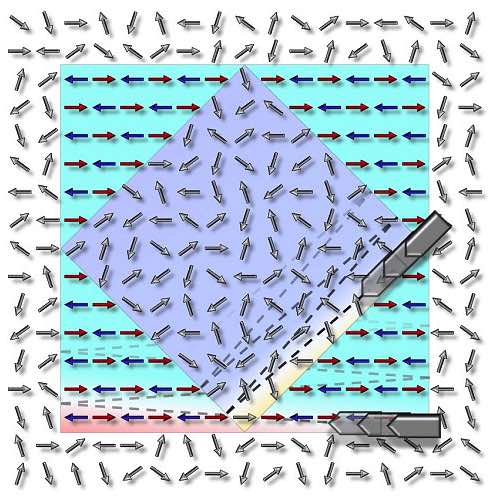Magnetism in Non-Magnetic Materials
By researchers from Korea Advanced Institute of Science and Technology
This is a Press Release edited by StorageNewsletter.com on November 14, 2016 at 4:14 pmResearchers have induced non-magnetic materials to become magnetic using an electric field, opening potential for magnetoelectric as well as thermoelectric applications.
A team of researchers from the Department of Physics at the Korea Advanced Institute of Science and Technology (KAIST) has developed a technology that allows non-magnetic materials to have magnetic properties or remove magnetic properties from a magnet using an electric field.
Based on this research, it is expected that if magnetic-material-based storage is developed, applications for high-speed massive data transfer will be possible, according to the team led by Professor Chan-Ho Yang.
The results of this research, with Byung-Kwon Jang (Ph.D. student) as the first author, were published online in Nature Physics.
Storage capacity technology has rapidly advanced to the point where we can easily get a portable HDD with terabyte-level storage; however, the increase in storage is inevitably followed by slower data access speed for a storage device. Although HDDs are currently the most widely used storage devices, their technical applications are limited due to their slow data access speed.
Other methods such as SSDs, floating gates and resistive switching have been developed as alternatives. Yet, they leave tracks every time data is written, and this can cause fatigue cumulative damage.
There have been many attempts to compose cells-the smallest storage space on a storage device-with magnetic materials as that would enable faster data access speeds and remove fatigue cumulative damage. Generally, the researchers tried to use induced magnetic fields through current flow. However, magnetic fields are very difficult to shield and can affect a large area. As a result, they alternate the magnetic property of adjacent cells. Because each cell cannot be adjusted one by one, it cannot also be arranged in a certain direction, and therefore, it is hard to change the magnetic state.
Professor Yang and his team adjusted the magnetic state by using magnetoelectric interaction to deal with this issue. Instead of using magnetic fields, magnetoelectric interaction is a method that uses an electric field to adjust the magnetic state. It has the advantage of smaller energy consumption as well.
Yang’s team demonstrated that cells facing random directions can be arranged in a certain direction by only inducing an electric field. In addition, the reverse was also proved to be feasible.
Concept graphic
for electric-field-induced magnetic phase switching magnetic direction

(Source: KAIST)
Until this research, most cases of previous findings were only feasible at extremely low temperatures or high temperatures, but the technology developed by the research team is practicable at room temperature by manipulating chemical pressure. It allows for a reversible magnetic state, and moreover, is non-volatile. Therefore, the results of this research are expected to provide the basis for developing next-generation information storage device.
“The changes in the electric magnetic state will be accompanied by entropy changes,” Yang said. “Our research is expected to open new potential for future applications not only for magnetoelectric devices, but also for thermoelectric effect.”
This research has been worked on jointly with Dr. Si-Yong Choi from the Korea Institute of Materials Science, Prof. Yoon-Hee Jeong from the Pohang University of Science and Technology, Dr. Tae-Yeong Koo from the Pohang Accelerator Laboratory, Dr. Kyung-Tae Ko from the Max Planck Institute for Chemical Physics of Solidswww.cpfs.mpg.de/en, Dr. Jun-Sik Lee and Dr. Hendrik Ohldag from the SLAC National Accelerator Laboratory of the United States, and Prof. Jan Seidel from the University of New South Wales of Australia.













 Subscribe to our free daily newsletter
Subscribe to our free daily newsletter

